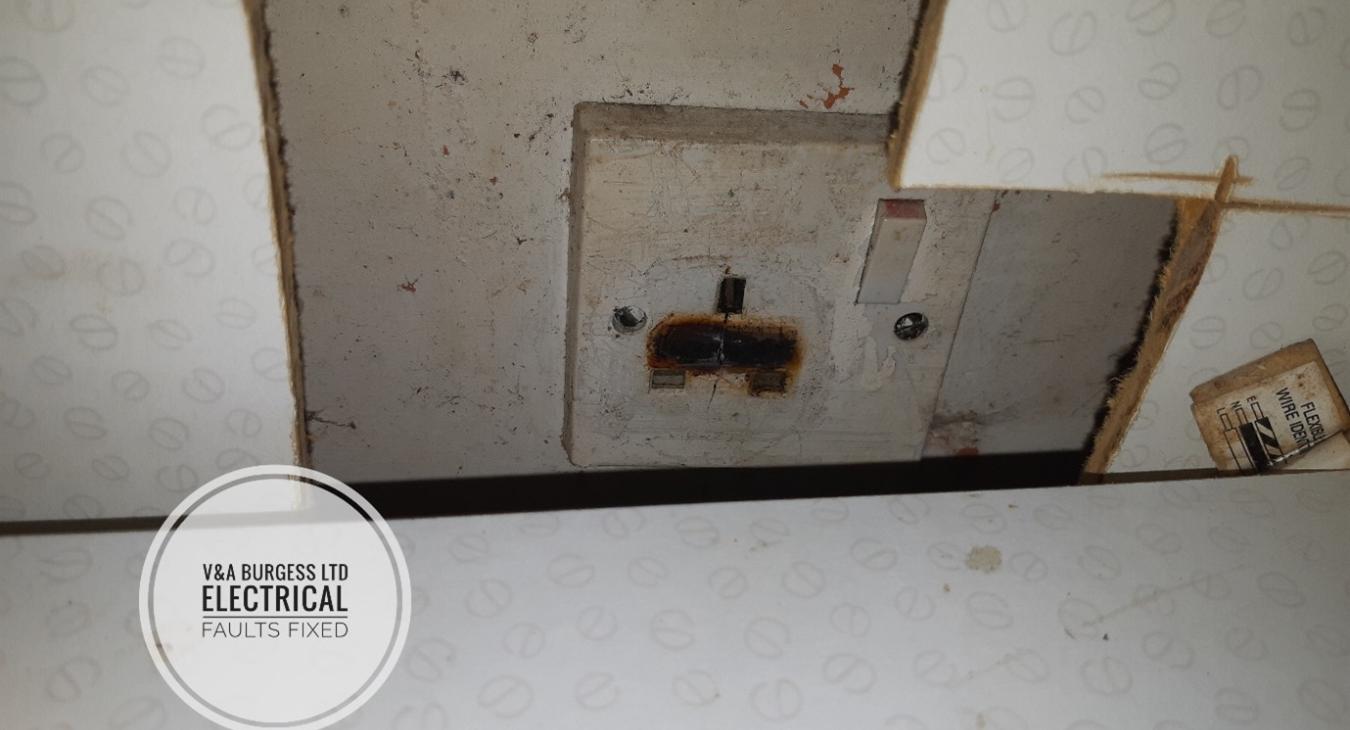
1) Why has my plug socket melted?
There are a number of possible reasons:
- Overheating
- Too much power demand
- Incorrectly installed fuses / tampering
- Loose connections in the fuse
- Loose connections in the plug socket
- Old or worn equipment
- Continuous heavy use leading to overheating
If you have a MELTED PLUG SOCKET then any one of the list above could be the issue.
Back to top2) Overheating
Electrical cables and systems are designed by manufacturers of the products and electricians to operate within a given temperature limit. This temperature limit is considered during the electrical design process before the installation is wired and installed. The products used are carefully selected and considered for their operating properties. When these limits are exceeded then things can overheat and cause melting and other problems
Back to top3) Too Much Power Demand
When we ask too much of our electrical system, we can see problems. Our electrical system has been installed in a manner to cope with the vast majority of electrical appliances that we will likely use in our home and the equipment that we will have installed. A plug socket is intended for a limited load and a plug top is intended for up to 13 amps of electrical current. When these parameters are exceeded, we can see problems occurring. Despite the maximum fuse size for a plug top being a 13 amp fuse, the plug top, socket and connections are often not happy with this if it continues for a long period!
Back to top4) Incorrectly installed Fuses / tampering
Whilst most people are sensible, common sense is not that common. We have witnessed all manner of electrical and DIY failures over the years. It is not uncommon for fuse tampering to happen which involves replacing the fuse that the manufacturer intended be used in the equipment for a larger fuse, a nail, a screw, tin foil or some other insane apparatus likely to cause melting or fires!
We have seen this happen in plugs and also in older fuse boxes that contain fuse wire. Fuse tampering is a very serious problem and if you suspect that you have these issues in your home then call us to come and investigate for you. Fuses are there to protect the appliances and cables from overload. Without a correctly sized fuse to protect our wiring, the cables could literally catch fire before the power is turned off, madness.
Back to top5) Loose connections in the fuse
When plug tops become old, have been shoved in and out of plug sockets multiple times or are just the victims of wear and tear, we can see issues that start to occur. Fuses can start to become slightly loose in the plug top of the appliance. Wiring can work its way loose inside the plug top and the pins of the plug can become worn making poor contact.
Whenever loose connections develop, electricity does not work as it should.
“LOOSE WIRES CAUSE FIRES”
Electrically speaking, for an appliance to work it requires electrical current to flow around the appliance freely and without hinderance. In order for this to happen we require that all cables and connections are nice and tight. When connections are loose we start to see an increase in resistance making it harder for current to flow. This causes a build up of heat which then leads to a further INCREASE in resistance. This becomes an ever-growing problem quite quickly. Heat, resistance, more heat, more resistance and so on. This can lead to a MELTED PLUG SOCKET quite quickly.
Back to top6) Loose connections in the plug socket
Similarly, to a plug top, a plug socket can also suffer loose connections. There are moving parts to most plug sockets which can succumb to wear and tear. Metal wears away very slightly over time and causes parts that are intended to contact each other to start making poorer contact. Switches on the sockets are a weak point as well along with the shutters that open to allow the pins of the plug top to enter the plug socket.
The wiring terminals at the rear of the plug socket are where the electric cables connect into. These can work loose with time which can lead to the issues of resistance and heat just like the plug top situation we mentioned above.
7) Old or worn equipment
As equipment ages it becomes less reliable, metal components can develop stress fractures, excessive wear and faults can occur within equipment and appliances. When this happens we can see the risk of heating and melting begin to increase.
Back to top8) Continuous heavy use leading to overheating
A common problem we see is heating elements for hot water tanks wired onto a plug top and inserted into a plug socket. This can cause absolute havoc. Now technically an immersion heating element draws 13.04 amps or a little less which should be ok on a 13 amp fuse and plug right? Wrong! Continuous loading on a fuse in this manner will cause a great amount of heat to be generated causing issues for any surrounding plastic material (plug top) that holds that fuse or any socket that the plug is inserted into.
As we can see there are many different issues that can cause a melted plug socket to occur and it may be useful to have old equipment checked, old plug tops replaced by a professional electrician and any electrical accessories that are particularly old checked out.
Electrical systems and accessories are not designed to last forever, they can provide years of maintenance free service but inevitably will fail at some point and in some cases, spectacularly.
If you have any doubts over the electrical safety of your homes wiring system, plugs or appliances then please give us a call and we will discuss your options with you. If you are worried about any possible product recalls then check the electrical safety first website for details here.
Back to top










